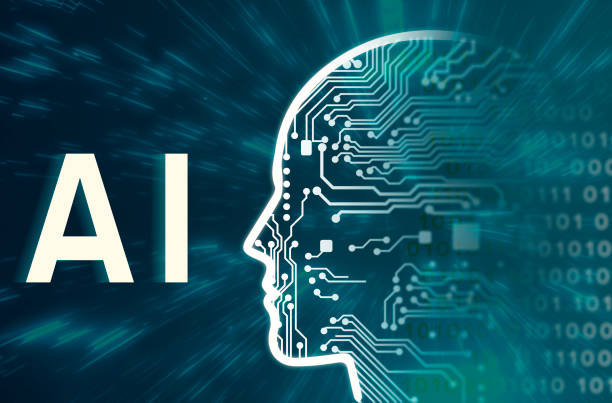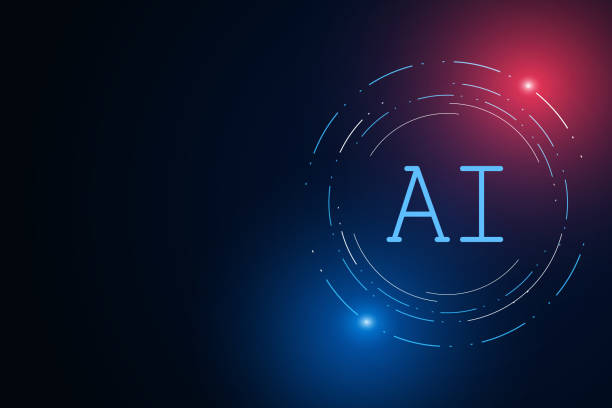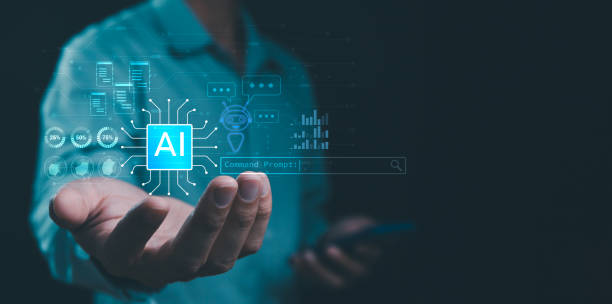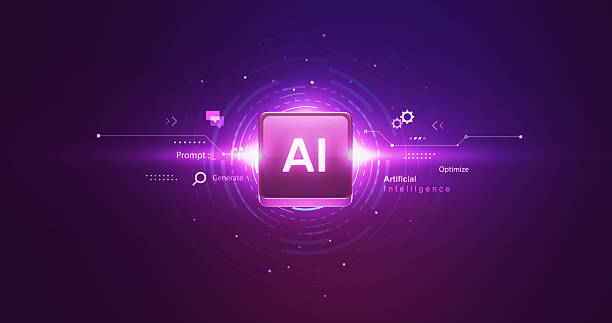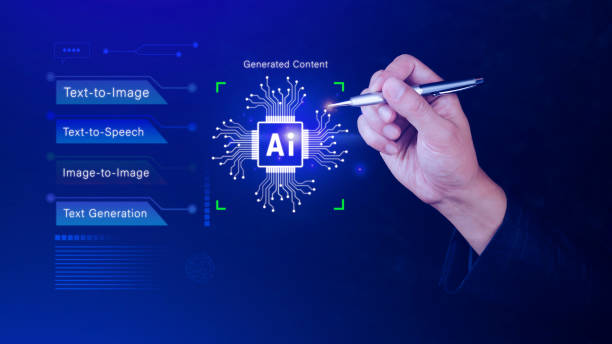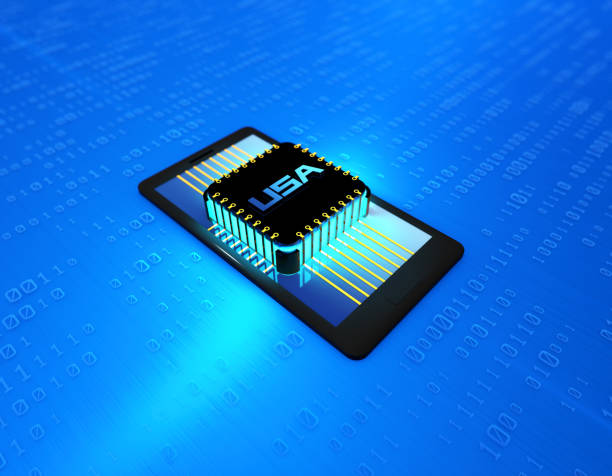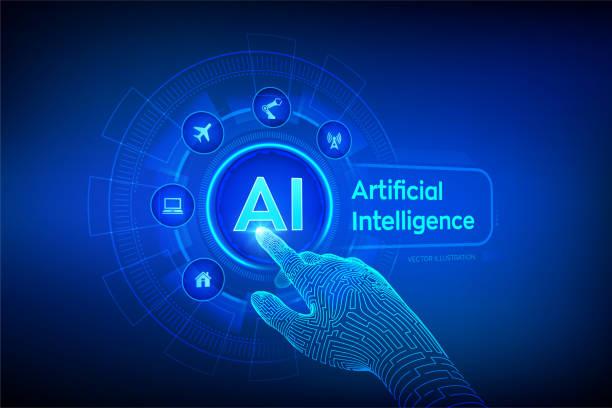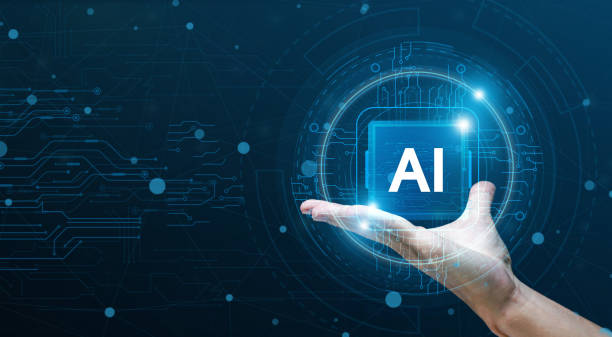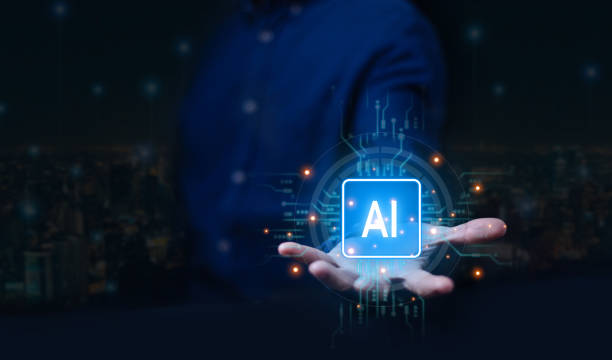What is an AI robot and how does it work?
What is an AI robot and how does it work?
#AI robot is a combination of two separate but related fields #Artificial Intelligence (AI) and #Robotics.
Simply put, an AI robot is a physical or virtual machine that uses AI algorithms to perform tasks that typically require human intelligence.
These tasks can include learning, reasoning, problem-solving, understanding natural language, and even creativity.
An AI robot uses sensors to collect information from its surroundings, processes this information, and then uses AI algorithms to make decisions and take actions.
An AI robot can exist in the physical or virtual world.
For example, an industrial robot working in a factory is a physical AI robot, while a virtual assistant like Siri or Alexa is a virtual AI robot.
An AI robot is actually a complex system made up of different components.
These components include:
- Sensors Sensors collect information from the robot’s surroundings.
This information can include images, sounds, temperature, pressure, etc. - Processor The processor processes the information collected by the sensors.
The processor can be a computer or a microcontroller. - AI algorithms AI algorithms are used to make decisions and perform tasks.
These algorithms can include machine learning, neural networks, fuzzy logic, etc. - Actuators Actuators allow the robot to act in its environment.
This action can include movement, grabbing objects, talking, etc.
The AI robot Wikipedia can perform various tasks using these components.
For example, an AI robot can pick up parts from a conveyor belt in a factory and place them in a box.
An AI robot can also help patients in a hospital.
An AI robot can even cook food in a restaurant.
Do you dream of a thriving online store but don’t know where to start?
Rasaweb is your comprehensive e-commerce website design solution.
✅ Attractive and user-friendly design
✅ Increased sales and revenue⚡ Get free consultation
Types of AI Robots; From Industrial to Home
Click here to preview your posts with PRO themes ››
Types of AI Robots; From Industrial to Home
AI robots come in various shapes and sizes and are designed for a variety of applications.
There are different classifications for AI robots that are based on different criteria.
Here are some of the most common types of AI robots:
- Industrial robots These robots are used in factories and manufacturing environments to perform repetitive and dangerous tasks such as welding, painting, packaging, and assembly.
Industrial robots are usually very precise and fast. - Service robots These robots are designed to provide services to humans.
Service robots can be used in hospitals, hotels, restaurants, and homes.
Their tasks can include cleaning, transportation, catering, and caring for people. - Agricultural robots These robots are used in farms and gardens to perform tasks such as planting, harvesting, watering, and spraying.
Agricultural robots can help increase productivity and reduce costs. - Medical robots These robots are used in hospitals and medical centers to perform surgery, rehabilitation, and assist patients.
Medical robots can increase surgical precision and reduce patient recovery time. - Space robots These robots are used to explore space and conduct scientific research on other planets and moons.
Space robots can work in harsh and dangerous space conditions. - Military robots These robots are used in armies to perform tasks such as reconnaissance, bomb disposal, and combat.
The use of military robots can save human lives on the battlefield. - Home robots These robots are designed to help with everyday tasks at home.
Home robots can vacuum, mow lawns, and care for the elderly.
In addition to these classifications, AI robots can also be categorized based on the type of AI used.
Some robots use machine learning to learn from data and improve their performance, while others use expert systems to make decisions based on specialized knowledge.
Click here to preview your posts with PRO themes ››
Choosing the right type of AI robot depends on the specific needs and requirements of each application.
With the advancement of technology, it is expected that we will see the emergence of more advanced AI robots in the future that are capable of performing more complex tasks.
Applications of AI Robots in Various Industries
Applications of AI Robots in Various Industries
AI robots are rapidly infiltrating various industries and changing the way we work and live.
With advanced capabilities such as learning, reasoning, and problem-solving, these robots can perform tasks that were previously only possible by humans.
Here are some of the most important applications of AI robots in various industries:
- Manufacturing AI robots are used in factories to perform tasks such as assembly, quality inspection, packaging, and transportation.
These robots can increase production speed, reduce costs, and improve product quality. - Healthcare AI robots are used in hospitals and medical centers to perform surgery, rehabilitation, diagnose disease, and care for patients.
These robots can increase surgical precision, reduce patient recovery time, and help doctors diagnose diseases more accurately. - Retail AI robots are used in stores to provide customer service, manage inventory, and marketing.
These robots can help customers find the products they want, answer their questions, and improve the shopping experience. - Transportation AI robots are used in the transportation industry to drive self-driving cars, deliver goods, and manage traffic.
These robots can increase road safety, reduce travel time, and optimize transportation costs. - Financial Services AI robots are used in the financial services industry to detect fraud, manage risk, and provide financial advice.
These robots can identify suspicious patterns, assess financial risks, and help customers make informed financial decisions. - Education AI robots are used in the education industry to provide personalized learning, evaluate student performance, and provide feedback.
These robots can help students learn better and faster.
Click here to preview your posts with PRO themes ››
With the advancement of technology, it is expected that we will see more applications of AI robots in various industries.
These robots can help improve productivity, reduce costs, and provide better services to humans.
| Industry | AI Robot Application |
|---|---|
| Manufacturing | Assembly, Quality Inspection, Packaging |
| Healthcare | Surgery, Rehabilitation, Disease Diagnosis |
| Retail | Customer Service, Inventory Management |
| Transportation | Self-Driving Cars, Goods Delivery |
Advantages and Disadvantages of Using AI Robots
Advantages and Disadvantages of Using AI Robots
The use of AI robots has several advantages and disadvantages that should be considered before using them.
Advantages:
- Increased productivity AI robots can perform tasks faster and more accurately than humans, resulting in increased productivity.
- Reduced costs AI robots can reduce labor costs and be more cost-effective in the long run.
- Improved safety AI robots can perform dangerous tasks without endangering human lives.
- Increased accuracy AI robots can perform tasks with greater accuracy than humans and reduce the chance of error.
- Ability to perform repetitive tasks AI robots can perform repetitive tasks without fatigue and with high accuracy.
Disadvantages:
- High initial cost Purchasing and setting up AI robots can be costly.
- Need for expertise Maintaining and repairing AI robots requires expertise.
- Job loss The use of AI robots can lead to job loss for some people.
- Ethical concerns The use of AI robots has ethical concerns about accountability and decision-making.
- Dependence on technology The use of AI robots can lead to dependence on technology and vulnerability to cyber attacks.
Ultimately, the decision to use AI robots should be made by considering their advantages and disadvantages and taking into account the specific circumstances and needs of each organization or individual.
The correct and responsible use of AI robots can help improve human lives and advance societies.
Do you dream of a thriving online store but don’t know where to start?
Rasaweb is your comprehensive e-commerce website design solution.
✅ Attractive and user-friendly design
✅ Increased sales and revenue⚡ Get free consultation
Challenges Facing the Development and Use of AI Robots
Challenges Facing the Development and Use of AI Robots
The development and use of AI robots faces several challenges that must be overcome to fully exploit the potential of these technologies.
These challenges include:
- Technical Challenges
- Developing AI algorithms AI algorithms must be powerful and reliable enough to perform complex tasks.
- Improving sensors and actuators Sensors must be able to collect accurate information from the environment and actuators must be able to operate accurately and efficiently.
- Integrating hardware and software The robot’s hardware and software must work together seamlessly to provide optimal performance.
- Economic Challenges
- Development and production costs Developing and producing AI robots can be costly.
- Access to resources Access to the resources needed to develop and produce AI robots, such as skilled labor and raw materials, may be limited.
- Return on investment Ensuring a return on investment in AI robot projects can be difficult.
- Social Challenges
- Job loss The use of AI robots can lead to job loss for some people.
- Security concerns AI robots can be used for malicious purposes.
- Ethical concerns The use of AI robots has ethical concerns about accountability and decision-making.
- Legal and Regulatory Challenges
- Developing laws and regulations There is a need to develop laws and regulations to regulate the use of AI robots.
- Accountability Determining accountability in the event of accidents caused by AI robots is difficult.
- Privacy Protecting the privacy of information collected by AI robots is important.
Overcoming these challenges requires a joint effort of governments, industry, and universities.
Investing in research and development, developing appropriate laws and regulations, and training a skilled workforce can help accelerate the development and responsible use of AI robots.
The Future of AI Robots; What to Expect?
The Future of AI Robots; What to Expect?
The future of AI robots is very bright and full of potential.
With the increasing advancements in the fields of artificial intelligence, robotics, and cognitive sciences, it is expected that future robots will be able to perform more complex tasks and play a more important role in human lives.
Here are some of the key trends that can be expected in the future of AI robots:
- Smarter and more autonomous robots Future robots will be able to learn, decide, and interact with their environment independently.
- Collaborative robots Future robots will increasingly collaborate with humans in work and home environments.
- More specialized robots Future robots will be designed and manufactured to perform specific tasks in various industries.
- More accessible robots The cost of developing and producing robots will decrease and robots will be more accessible to more people and organizations.
- Safer and more reliable robots The safety and reliability of robots will improve and concerns about their use will decrease.
AI robots in the future will play a more important role in various fields including manufacturing, healthcare, transportation, education, financial services, and agriculture.
They can help improve productivity, reduce costs, increase safety, and provide better services to humans.
However, the development and use of AI robots requires attention to ethical, social, and legal issues.
It must be ensured that robots are used responsibly and in the best interests of humans.
Training a skilled workforce and developing appropriate laws and regulations can help manage these challenges.
In summary, the future of AI robots is very promising.
As technological advances continue, it is expected that robots will play a more important role in our lives and help solve some of the biggest challenges facing humanity.
#Future #ArtificialIntelligence #Robotics
Important Points in Choosing and Buying an AI Robot
Important Points in Choosing and Buying an AI Robot
Choosing and buying a suitable AI robot can be an important and costly decision.
To ensure that the purchased robot meets your needs and is worth the investment, you should pay attention to the following points:
- Determine Needs and Requirements Before starting your search, you should specify your needs and requirements accurately.
What tasks do you want the robot to perform? What features are important to you? What budget do you have? - Research and Investigation Research the different types of AI robots available in the market.
Compare features, capabilities, prices, and user reviews. - Choose a Reputable Supplier Buy from a reputable and experienced supplier.
Make sure of the quality of their products, after-sales services, and technical support. - Review Technical Specifications Carefully review the technical specifications of the robot.
Including processing power, memory, sensors, actuators, and battery.
Make sure that the technical specifications of the robot match your needs. - Testing and Evaluation Test and evaluate the robot before buying it.
Check the performance of the robot in real conditions.
Make sure of its capabilities and features. - Consider Maintenance Cost In addition to the purchase cost, consider the maintenance cost of the robot.
This cost includes spare parts, repairs, and support services. - Study Warranty Conditions Study the warranty conditions of the robot carefully.
Be aware of the warranty period, coverage conditions, and how to use the warranty. - Get Advice If necessary, get advice from experts and specialists in the field of robotics and artificial intelligence.
They can help you choose the right robot.
By following these tips, you can choose and buy a suitable AI robot that meets your needs and helps improve your performance and productivity.
AI Robot Maintenance and Repair; Practical Guide
AI Robot Maintenance and Repair; Practical Guide
Proper maintenance and repair of AI robots is essential to ensure optimal performance, increase lifespan, and prevent sudden failures.
Here is a practical guide to maintaining and repairing AI robots:
- Periodic Inspection Inspect the robot periodically.
Identify worn or damaged parts.
Check the connections and make sure they are tight. - Cleaning Clean the robot regularly.
Prevent the accumulation of dust and dirt on the parts.
Use appropriate detergents for cleaning. - Lubrication Lubricate the moving parts of the robot periodically.
Use appropriate lubricants. - Software Check Check the robot’s software regularly.
Make sure the software is up to date.
Debug the software if there are any errors. - Sensor Check Check the robot’s sensors regularly.
Make sure the sensors are calibrated.
Replace the sensors if necessary. - Battery Check Check the robot’s battery regularly.
Make sure the battery is charging correctly.
Replace the battery if necessary. - Repairs In case of failure, entrust the robot to a repair specialist.
Avoid repairing the robot by unqualified persons. - Training Get the necessary training to maintain and repair the robot correctly.
Familiarize yourself with how the robot works.
By following these tips, you can properly maintain and repair your AI robot and ensure its optimal performance and lifespan.
AI Robot #Robotics #Maintenance #Repair
| Activity | Time Period |
|---|---|
| Visual Inspection | Weekly |
| Cleaning | Monthly |
| Lubrication | Quarterly |
| Software Check | Annually |
Are you disappointed with the low conversion rate of your online store?
Rasaweb is your definitive solution with professional e-commerce website design!
✅ Increase your sales and revenue
✅ Unique user experience for your customers
⚡ Get free consultation now!
Ethical Considerations in the Design and Use of AI Robots
Ethical Considerations in the Design and Use of AI Robots
With the increasing use of AI robots in human lives, paying attention to ethical considerations in the design and use of these technologies is of particular importance.
AI robots can have profound effects on human societies and it is necessary to carefully examine and manage these effects.
Here are some of the most important ethical considerations in this area:
- Accountability Who is responsible for the actions of AI robots? Who will be responsible in case of error or accident? These questions need accurate and transparent answers.
- Transparency How AI robots make decisions should be transparent and understandable.
People should know how robots make decisions and what factors influence their decisions. - Justice AI robots should not be discriminatory.
They should treat all people fairly and not make decisions based on irrelevant characteristics such as race, gender, or religion. - Privacy AI robots can collect a lot of information about people.
Protecting the privacy of this information is very important. - Security AI robots must be protected against hacking and abuse.
- Human Welfare AI robots should be used to improve human welfare.
They should not harm humans or reduce their quality of life.
To comply with these ethical considerations, it is necessary for designers, manufacturers, and users of AI robots to pay serious attention to these issues.
Developing appropriate laws and regulations and training a skilled workforce can help manage these challenges.
AI Robot #Ethics #ArtificialIntelligence
Getting to Know the Top Companies Active in the Field of AI Robots
Getting to Know the Top Companies Active in the Field of AI Robots
The AI robot industry Google is growing rapidly and many companies are active in this field.
These companies are developing advanced AI robots that can be used in various industries.
Here are some of the top companies active in this field:
- Boston Dynamics This company is known for developing advanced and agile robots such as Spot and Atlas.
The company’s robots are used in various fields including search and rescue, inspection, and logistics. - ABB This company is one of the largest manufacturers of industrial robots in the world.
ABB robots are used in factories and manufacturing environments to perform tasks such as assembly, welding, and packaging. - Fanuc This company is also one of the largest manufacturers of industrial robots in the world.
Fanuc robots are known for their high accuracy and reliability. - KUKA This is a German company that manufactures industrial robots and automation.
KUKA robots are known for their flexibility and programmability. - Intuitive Surgical This company develops surgical robots.
The company’s Da Vinci robot helps surgeons perform surgeries with precision and minimal invasion.
In addition to these companies, large technology companies such as Google, Amazon, and Microsoft are also investing in the development of AI robots.
These companies are developing service robots, self-driving robots, and other AI robots.
AI Robot #Company #ArtificialIntelligence
FAQ
| Question | Answer |
|---|---|
| What is an AI robot? | A robot that uses AI capabilities to understand the environment, reason, learn and make decisions to perform complex tasks independently. |
| What is the main difference between a regular robot and an AI robot? | AI robots can learn and adapt to their environment, while regular robots usually operate based on fixed and pre-programmed plans. |
| In what fields are AI robots used? | In fields such as industry (production lines), medicine (robotic surgery), services (customer support, smart vacuum cleaners), exploration (space and underwater) and entertainment. |
| How do AI robots learn? | They acquire new skills through machine learning (ML) and deep learning algorithms, by analyzing large data and identifying patterns. |
| Can AI robots have emotions? | Currently, no. They can identify or simulate emotions, but do not have the actual experience of emotions like humans. |
| What are the most important advantages of using AI robots? | Increased productivity, reduced human error, performing dangerous or repetitive tasks, and providing innovative and efficient services. |
| What are the challenges in developing AI robots? | The need for abundant and high-quality data, algorithmic complexity, ethical issues, cyber security, and high research and development costs. |
| Are AI robots dangerous to humans? | By following the principles of safe design and ethical regulations, no. Concerns are more related to social and economic impacts such as changes in the labor market. |
| What is an example of an AI robot in everyday life? | Smart vacuum cleaner robots (such as Roomba) that automatically map and clean the house, or smart voice assistants (such as Siri and Alexa). |
| How is the future of AI robots predicted? | They are expected to become smarter, more autonomous and capable of more complex interaction with humans, and play a more prominent role in industry, medicine, transportation and everyday life. |
And other services of Rasa Web Advertising Agency in the field of advertising
Smart Direct Marketing: Designed for businesses looking to digitally brand by customizing the user experience.
Smart Custom Software: Designed for businesses looking to engage users through attractive UI design.
Smart Content Strategy: Designed for businesses looking to engage users through attractive UI design.
Smart Direct Marketing: A fast and efficient solution to increase click-through rates by focusing on accurate audience targeting.
Smart Website Development: An effective tool for online growth with marketing automation.
And more than hundreds of other services in the field of internet advertising, advertising consulting and organizational solutions
Internet Advertising | Advertising Strategy | Reportage Ad
Resources
Smart Robot: Introduction, Application and Future
,What is Artificial Intelligence and How Does it Work?
,What kind of applications does a smart robot have?
,What is a Smart Robot?
? For the rise of your business in the digital world and reaching the peaks of success, Rasa Web Digital Marketing Agency with innovative services including website design with modern user interface, SEO, and campaign management is with you to have a powerful and lasting presence in the online space.
📍 Tehran, Mirdamad Street, next to the Central Bank, South Kazerun Alley, Ramin Alley No. 6

